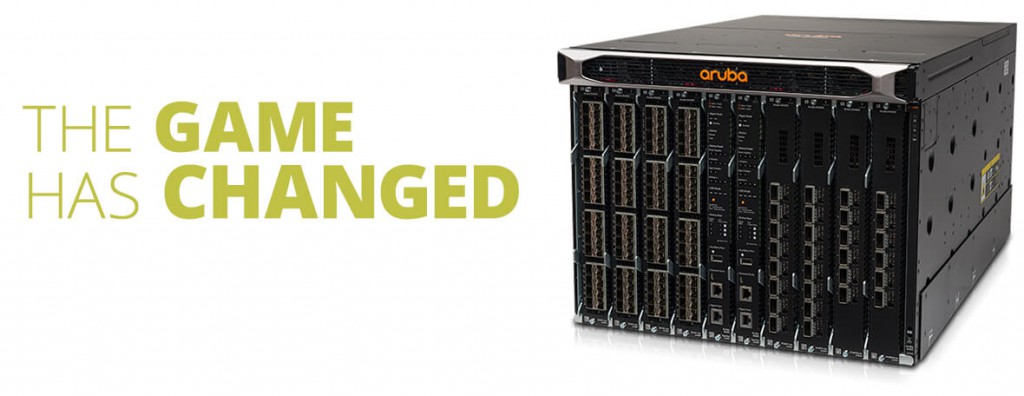Check these 5 things when you add new technologies on your network
Networks can be really simple but we insist on making it complex ! If you are adding new technologies onto an existing network, these sorts of questions should be kept in mind: 1. What can be broken? You need to make sure, when you add new protocols or technologies on to an […]
The post Check these 5 things when you add new technologies on your network appeared first on Cisco Network Design and Architecture | CCDE Bootcamp | orhanergun.net.
All-Flash Arrays: What Users Say About Top Vendors
IT Central Station users cite pros and cons of all-flash storage arrays from HPE, NetApp, and more.
Building Intent Based Networking System
I've been unhappy with my creation-to-consumption ratio lately, which is the amount of time spent creating compared to amount of time spent consuming. Yes I spend time creating design documents, business proposals, system architecture, slides for both technical and non-technical content, product requirement documents, blog posts, and occasionally write simple codes, but much of my free time is spent consuming for Netflix, newspapers, Twitter, televised sports, Facebook, blogs, Medium, TV series, online courses and others.
You may say we need consumption as an input prior to creating. And I agree, consuming is fine if it is part of learning or research in order to create something. But creation must come first. So if I commit to create something, let's say a system design or even this blog post, I must start by starting the work first and whenever I feel some information is needed to add or validate the work only then I will consume new inputs to mix with the old ones and fuel creativity.
Tonight I'm sitting in front of my macbook, in an attempt to increase my creation-to-consumption ratio, by writing about building Intent-Based Networking System (IBNS). Let's start with problem definition.
The end customer is a Continue reading
iSCSI ESX Datastore
Due to close scare in my lab I decided to switch the datastore from a single onboard hdd to iSCSI. I use a WD MyCloud EX2 Ultra but there are a lot of more advanced NAS out there with a whole host of extra features. The WD is rather basic but is sufficient for my needs of partitioning it into a backup drive and an iSCSI drive. Since moving onto this I haven’t noticed any real performance degradation in my lab, its run over 1 Gig port.
Preview: Networking Field Day Exclusive with Aruba (HPE) – The 8400 core switch
Back to Silicon Valley!
As a network type, it’s hard not to be excited when heading to a Networking Field Day event. I joined then NFD club by attending NFD14 and have been hooked ever since.
Not only is it an honor and a privilege to be invited to an NFD event, the personal relationships that are forged in the larger TFD community are some of the most valuable I’ve ever had in my career.
This go around we’ll be visiting Aruba (A Hewlett Packard Enterprise Company) in Santa Clara to deep dive on the newest addition to the Aruba product line – the 8400 core switch.
A new face in campus town – the Aruba 8400
It’s been a while since anything exciting happened in the world of campus networking. It’s a steady segment for most vendors but nothing disruptive has really happened in the last few years.
And that’s not incredibly surprising. For better or worse, as long as campus networks aren’t broken in most enterprises, they are often neglected in favor of the data center and cloudy pursuits.
Aruba is touting the 8400 to increase automation and visibility in the campus core – both are areas Continue reading
Preview: Networking Field Day Exclusive with Aruba (HPE) – The 8400 core switch
Back to Silicon Valley!
As a network type, it’s hard not to be excited when heading to a Networking Field Day event. I joined then NFD club by attending NFD14 and have been hooked ever since.
Not only is it an honor and a privilege to be invited to an NFD event, the personal relationships that are forged in the larger TFD community are some of the most valuable I’ve ever had in my career.
This go around we’ll be visiting Aruba (A Hewlett Packard Enterprise Company) in Santa Clara to deep dive on the newest addition to the Aruba product line – the 8400 core switch.
A new face in campus town – the Aruba 8400
It’s been a while since anything exciting happened in the world of campus networking. It’s a steady segment for most vendors but nothing disruptive has really happened in the last few years.
And that’s not incredibly surprising. For better or worse, as long as campus networks aren’t broken in most enterprises, they are often neglected in favor of the data center and cloudy pursuits.
Aruba is touting the 8400 to increase automation and visibility in the campus core – both are areas Continue reading
Elevators Vs. Networks: Applying Predictive Analytics
Could predictive analytics help foresee network failures?
Container Networking Challenges the Focus of Tigera Calico Update
 Enterprises looking to deploy containers are struggling with connectivity challenges.
Enterprises looking to deploy containers are struggling with connectivity challenges.
Worth Reading: Ageism in technology
The post Worth Reading: Ageism in technology appeared first on rule 11 reader.
Home Automation Setup with Apple #HomeKit
As many of you know, I’ve been diving into the home automation pond for awhile now. I’ve been asked to blog out my current home setup and this is an attempt to do that. There’s MUCH too much to be put into a single post, which is why I started a new blog for this subject over at www.homekitgeek.com as well as doing some video reviews of different HomeKit accessories. Work in process, but I’ll do the short version here.

Apple HomeKit
![]()
I chose to use the Apple homeKit framework as the base for my home automation journey for a few reason. The biggest one is that I already owned a couple of Apple TV (gen4) devices which fit the home automation hub role. These devices are a homeKit hub and are the always-on/always-present devices that are used to perform orchestration/automation actions when I’m home or away. These also tie directly into Apple’s iCloud which allows me remote access to my homeKit gear without having to VPN into my home network.
Home Setup Room-By-Room
There’s a lot to talk about here, but I thought I would just do a quick description of what’s going on room-by-room Continue reading
Equinix Adds Direct Connection to SAP Cloud
 Equinix already offers direct connectivity to AWS, Microsoft Azure, Oracle Cloud, Google Cloud Platform, and IBM Bluemix.
Equinix already offers direct connectivity to AWS, Microsoft Azure, Oracle Cloud, Google Cloud Platform, and IBM Bluemix.



